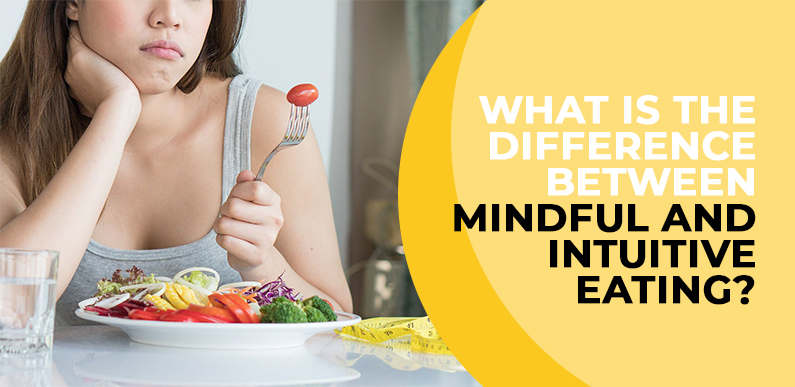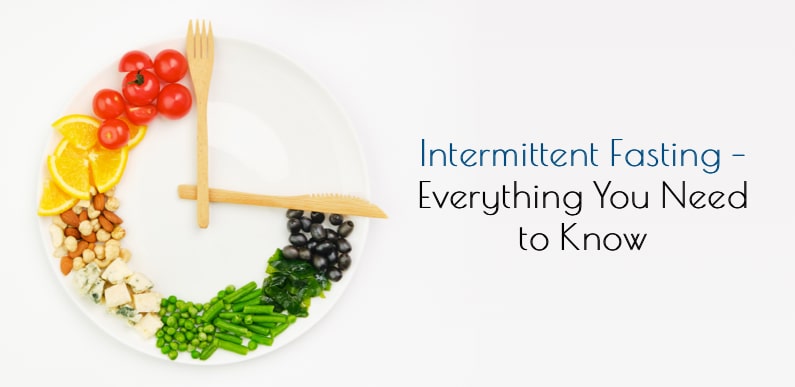

As human beings, it is virtually impossible to separate our eating habits from our mental state. Our emotions, thoughts, and beliefs influence our diet choices—for better or for worse.
If you would like to bring a more focused intention to your diet (or disentangle yourself from harmful beliefs about food), you may want to pursue a mindful or intuitive approach to eating.
It is easy to assume that mindful eating and Intuitive Eating are two terms for one concept. After all, the words “mindful” and “intuitive” are near-synonyms, and the methods bear some similarities. However, these approaches to eating have distinct histories and differences in everyday use.
Whether your journey takes you toward mindful or Intuitive Eating (or a combination of both), here is what you can expect.
What Is Mindful Eating?
Although mindfulness is trendy these days, it is hardly a new concept. Ideas like non-judgment, patience, and living in the present moment stretch back to ancient Buddhism. It was not until the 20th century, though, that applying them to, say, a slice of pizza became popular.
In essence, though, mindful eating involves harnessing present-moment awareness before, during, and after eating. This can apply to multiple practices.
Mindful Eating Principles
- Minimizing distractions while eating, such as turning off the TV or keeping your phone out of reach
- Savoring food’s tastes and textures
- Experiencing food with all five senses
- Eating slowly and chewing more thoroughly
- Taking smaller bites or setting down utensils between bites
- Practicing gratitude, i.e., offering thankfulness before meals
- Paying close attention to the body’s hunger and fullness cues while eating
- Acknowledging feelings about or responses to various foods without judgment
What The Evidence Says
Eating more mindfully has some proven positive effects (beyond just helping you enjoy your meals more).
An extensive systematic review in the journal Eating Behaviors found that people who received mindfulness training could reduce binge eating and emotional eating behaviors.1 Other research has linked increased mindfulness to weight loss and better self-management of type 2 diabetes.
What Is Intuitive Eating?
Where mindful eating involves a general application of mindfulness to diet, Intuitive Eating offers a more focused approach. Though there is plenty of overlap between the two methods, Intuitive Eating is a specific program developed in the 1990s by two dietitians, Elyse Resch and Evelyn Tribole.
Intuitive Eating aims to free people from the confines of damaging beliefs about food (and, often, about themselves) to establish judgment-free eating. It trains users to eat in response to physical hunger and satiety cues rather than emotional cues. It helps users cultivate the ability to notice and identify sensations of hunger, fullness, and satisfaction as they arise in the body. The program does so by emphasizing ten core principles.
10 Core Principles of Intuitive Eating
- Reject the diet mentality
- Honor your hunger
- Make peace with food
- Challenge the food police
- Discover the satiation factor
- Feel your fullness
- Cope with your emotions with kindness
- Respect your body
- Movement—feel the difference
- Honor your health—gentle nutrition
What the Evidence Says
Unlike mindful eating, Intuitive Eating addresses letting go of harmful beliefs that may stem from past life experiences or unrealistic diets.
Giving yourself unconditional permission to eat, not labeling foods as “good” or “bad,” and meeting difficult emotions with self-compassion are just a few of the ways intuitive eating can steer you toward a clean mental slate about food. The program also encourages incorporating a physical activity that brings you joy.
Intuitive Eating is associated with higher levels of self-esteem and lower levels of disordered eating, body image concerns, and psychological distress. While weight loss is not a goal of Intuitive Eating, numerous studies have concluded that Intuitive Eating may be associated with lower body mass index (BMI).
How Mindful and Intuitive Eating Can Work Together
Mindful eating and Intuitive Eating are by no means mutually exclusive. While several of the Intuitive Eating principles incorporate features of mindfulness, practicing mindfulness does not mean that you will automatically include the principles of intuitive eating.
Both philosophies address the ways our mental state can influence our food choices, and both encourage similar actions like tuning into feelings of fullness while eating and experiencing pleasure in meals and snacks.
They can also both help reduce feelings of stress about food in different ways. Mindful eating does so by limiting distractions during meals, while Intuitive Eating incorporates mindfulness and other tools to reconnect with the body while rooting out deep-seated negative beliefs about the body and food. Deciding whether mindful or Intuitive Eating (or both) is right for you will depend on your goals for your wellness.
If you would like to focus on your nutrition, for example, you may prefer to use mindful eating to bring awareness to how you are fueling your body. But if your goal is to rectify an out-of-sorts relationship with food, Intuitive Eating might be a better choice.
For more Nutrition related videos, click here !






